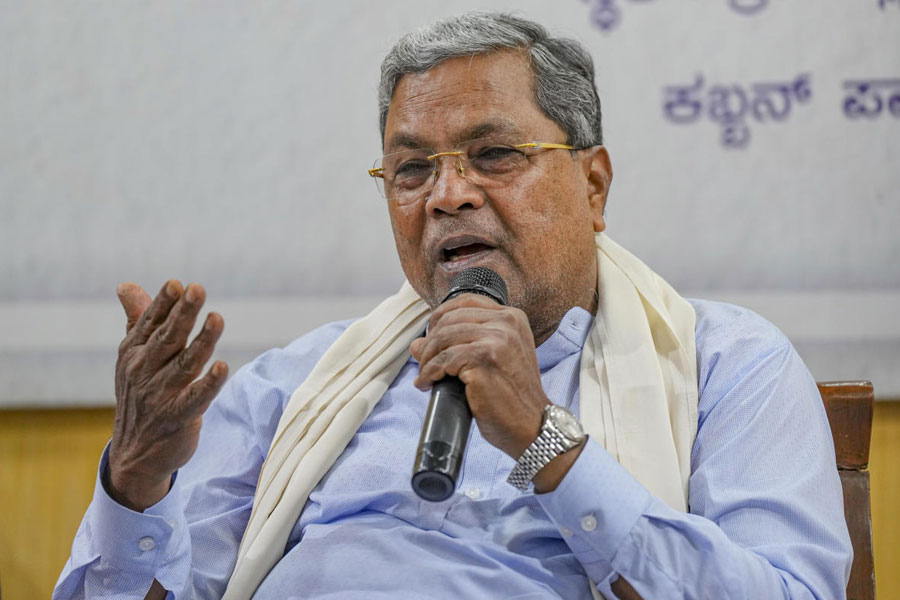 |
|
The political landscape of Karnataka has been recently dominated by swirling speculation regarding a potential change in leadership within the Congress-led government. Chief Minister Siddaramaiah's recent reaffirmation of his commitment to serving his full five-year term comes amidst persistent rumors of a rift between him and Deputy Chief Minister D.K. Shivakumar. While Siddaramaiah has publicly dismissed any discord, Shivakumar's visibly discontented demeanor has fueled the fire, leading to intervention from the Congress high command. The situation underscores the delicate balance of power within the coalition and the challenges of managing internal ambitions and expectations. The alleged “informal understanding” of a 2.5 year shared Chief Ministership, while never confirmed, has added another layer of complexity to the situation. This understanding if it existed and was communicated informally may be a source of future internal strife within the party, if the agreement does not materialise. The lack of official confirmation on the deal makes its impact harder to measure, but it is likely contributing to the current perception of discord and uncertainty within the Karnataka government. The intervention of Randeep Singh Surjewala, AICC general secretary in charge of Karnataka, highlights the seriousness with which the Congress party views the situation. His visit to Bengaluru suggests a concerted effort to manage the internal dynamics and prevent any further escalation of tensions. Surjewala’s role involves mediating between the two leaders, assessing the validity of the rumours, and ultimately ensuring stability within the state government. The public statements made by both Siddaramaiah and Shivakumar, while aimed at dispelling rumours, provide limited transparency into the true nature of their relationship. Siddaramaiah's assertion that there is 'no confusion or rift' and that they are 'united' appears to be a calculated attempt to project an image of stability and cohesion. Shivakumar's emphasis on 'party discipline' and his warning to leaders openly claiming a leadership change suggest an effort to control the narrative and prevent further speculation from within the party ranks. However, the very act of issuing such warnings indicates that dissenting voices and rumours of leadership changes exist within the party, meaning that internal conflicts are not being adequately handled. The opposition's claims of an impending change in guard, as highlighted by Siddaramaiah's rhetorical question ('Are they the Congress high command?'), further politicise the situation. It demonstrates the eagerness of the BJP and JDS to exploit any signs of internal division within the ruling Congress party. By seizing on these rumours, the opposition seeks to destabilize the government and potentially create opportunities for their own political advancement. The situation is further complicated by the reported discontent of Shivakumar. Visible discontentment may come from several sources including frustration in policy decisions or unmet expectations. While he publicly affirms his support for Siddaramaiah, his apparent unease raises questions about his future ambitions and willingness to abide by the status quo. This visible unhappiness adds to the perception of a rift, making it difficult for the Congress party to completely dismiss the rumours of a change in leadership. The dynamics within the Karnataka Congress are a reflection of the broader challenges faced by coalition governments in India. Managing competing interests, satisfying the ambitions of various factions, and maintaining unity in the face of external pressures require constant negotiation and compromise. The Karnataka situation highlights the importance of transparent communication, clear decision-making processes, and strong leadership in preventing internal disputes from escalating into full-blown crises. Failing to effectively manage these internal challenges could jeopardize the stability of the government and undermine the Congress party's position in the state. Furthermore, there is the question of the future of the government in Karnataka. The Congress’s ability to manage these internal tensions will be key to securing its governance and policy achievements in the state. If the internal conflicts escalate, it will be difficult for the Congress to maintain control and the state government might dissolve due to a lack of agreement within the party. Political stability is an important factor for economic development and growth, and any uncertainty surrounding government leadership and policies can affect state projects in a negative way. This has a negative consequence of slowing development and can also have broader implications for investment and economic sentiment within the state. The coming months will be crucial in determining whether the Congress party can effectively address the underlying issues contributing to the speculation of a leadership change. Whether Siddaramaiah and Shivakumar can forge a more harmonious working relationship and manage their respective ambitions will significantly shape the political landscape of Karnataka and the future of the Congress party in the state. Furthermore, the Congress High Command’s reaction and how it handles internal conflict resolution strategies will likely serve as a precedent for how they approach future leadership tensions in other states. The role of the Congress High Command as a mediator and decision maker is thus crucial, and their actions in the upcoming months will serve as an important indicator of their ability to effectively manage internal conflicts and stabilize governments. The situation illustrates a common phenomenon in political coalitions, where the pursuit of power and ambition often leads to internal conflicts and challenges to leadership. Therefore, it is important to understand the key stakeholders’ interests, the political dynamics at play and the long term implications of current events. Further reporting and observation will be useful to gauge the real impact of the situation on the overall functioning of the Karnataka state government. The long term stability and effectiveness of the government hinge on resolving the tensions and ensuring a unified front.
